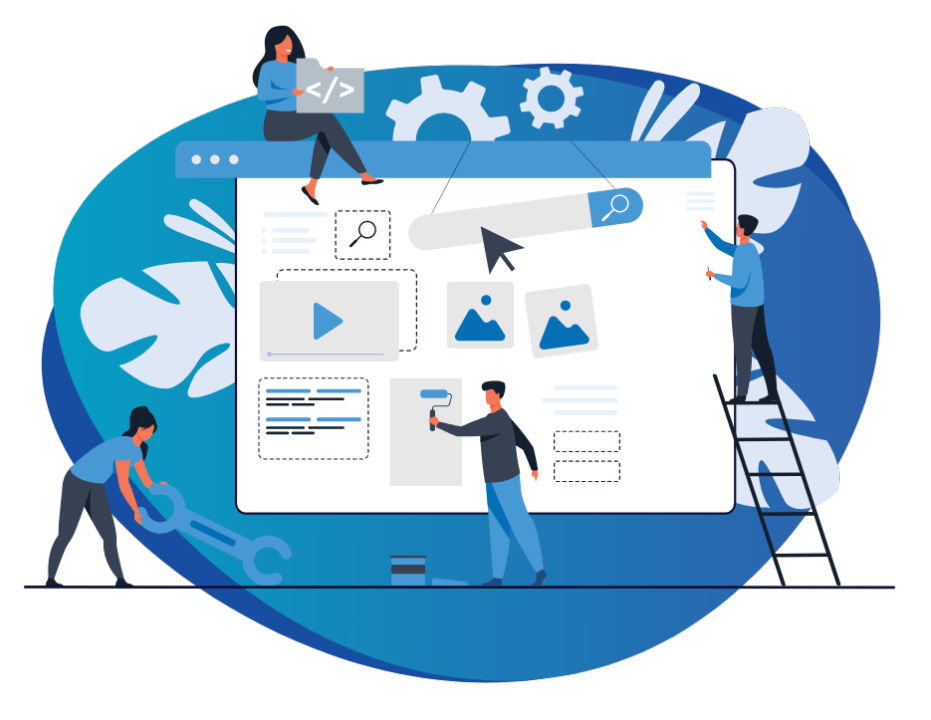The Importance of Accessibility in Digital Platforms and its Impact on Disability Inclusion

As we rely more on digital platforms for work, communication, education, and entertainment, ensuring that these platforms are accessible to everyone is not just a question of maximizing the audience but a fundamental matter of equity and human rights. Accessibility has become more crucial than ever before. It plays a significant role in ensuring that everyone, regardless of their abilities, can fully engage with and navigate through digital platforms. In this week's newsletter, we will explore the importance of accessibility on digital platforms and its profound impact on disability inclusion.
Understanding Accessibility in Digital Platforms
Accessibility in digital platforms refers to designing and developing websites, applications, and other digital tools in a way that enables individuals with disabilities to access and use them effectively. Disabilities can vary greatly, including visual, auditory, motor, and cognitive impairments. By implementing accessible features, we can ensure that individuals with disabilities can engage with digital platforms independently and without barriers.
Let us explore the importance of accessibility in digital platforms and its profound impact on disability inclusion
1. Breaking Down Barriers
Digital accessibility breaks down barriers and empowers individuals with disabilities to access information, opportunities, and services that were previously inaccessible to them. It enables them to participate in online communities, access educational resources, find employment opportunities, and engage in various online activities. By removing these barriers, we foster a more inclusive society that values diversity and provides equal opportunities for all.
2. Empowering Individuals with Disabilities
When digital platforms are designed with accessibility in mind, they empower individuals with disabilities to participate fully in society. They can apply for jobs, access education, and engage in online communities with ease. This empowerment leads to greater independence and self-confidence.
3. Boosting Inclusion in the Workforce
Accessible digital platforms are vital for creating inclusive workplaces. From accessible intranets and software to virtual meetings and e-learning, accessibility ensures that employees with disabilities can fully participate in their roles. This not only benefits individuals but also enriches organizational diversity and innovation.
4. Legal and Ethical Imperative
Ensuring accessibility in digital platforms is actually a legal requirement in nations across the globe; many countries have recognized the importance of digital accessibility and enacted laws and regulations to ensure compliance. Beyond legality, it's a matter of ethics. Failing to comply with these standards not only poses legal risks but also tarnishes a company's reputation. Prioritizing accessibility is a statement of commitment to diversity and inclusion.
5. Expanding Market Reach
When digital platforms are accessible, businesses can reach a broader audience. This includes not only individuals with disabilities but also older adults, non-native speakers, and people using a range of devices. An accessible platform is often a more user-friendly one, benefiting everyone. Accessible design fosters innovation. When we design for accessibility, we often discover creative solutions that benefit a broader audience. Moreover, businesses that prioritize accessibility can tap into a larger customer base as they cater to the needs of individuals with disabilities.
6.Expanding Opportunities:
Accessible digital platforms expand opportunities for individuals with disabilities. They can access information, apply for jobs, shop online, and engage with content just like anyone else. This opens doors to new educational and professional prospects, empowering individuals with disabilities to reach their full potential.
Steps Towards Accessibility
To create accessible digital platforms, organizations can take several steps, such as:
- Raise awareness by sharing knowledge about digital accessibility within your professional network and promoting its importance
- Learn about digital accessibility standards and guidelines, such as WCAG (Web Content Accessibility Guidelines),
- Conduct accessibility audits and assessments to identify areas for improvement.
- Implement accessible design principles, such as providing alternative text for images, using clear and concise writing, and ensuring color contrasts are readable for individuals with visual impairments.
- Incorporate assistive technologies, such as screen readers, keyboard navigation, and adjustable font sizes.
- Train designers, developers, and content creators on accessibility best practices.
- Encourage your organization to prioritize accessibility in digital projects and services.
- Involve individuals with disabilities in user testing and feedback sessions to improve accessibility.
- Regularly assess your digital platforms for accessibility and take steps to address any issues.
The Business Case for Accessibility
Aside from the moral and legal reasons, there is a strong business case for accessibility. By making digital platforms accessible, organizations can now serve the previously untapped market segment of individuals with disabilities, estimated to be over a billion people worldwide. Moreover, accessibility fosters a positive brand reputation, customer loyalty, and innovation by considering diverse perspectives and user needs.
Conclusion
The impact of accessibility in digital platforms on disability inclusion cannot be overstated. By embracing accessible design principles and making them an integral part of our digital initiatives, we are taking significant steps towards creating an inclusive society where everyone has equal access to opportunities.
Accessibility in digital platforms is not only a legal and ethical responsibility but also a powerful tool for promoting disability inclusion. By prioritizing accessibility, organizations can break down barriers, enhance user experiences, and create a more inclusive digital landscape. Let's work together to ensure that no one is left behind in this digital era.





